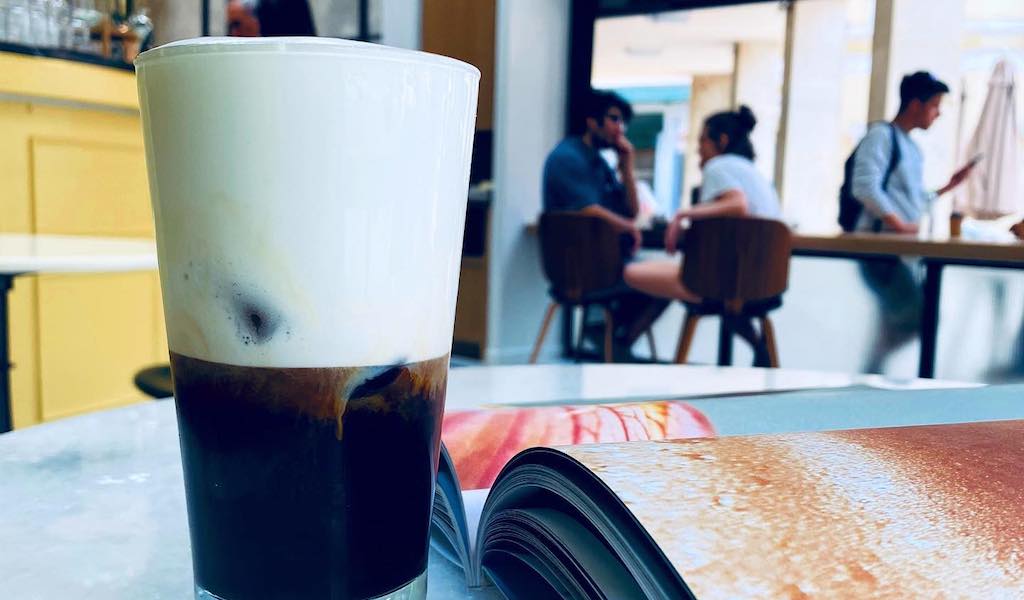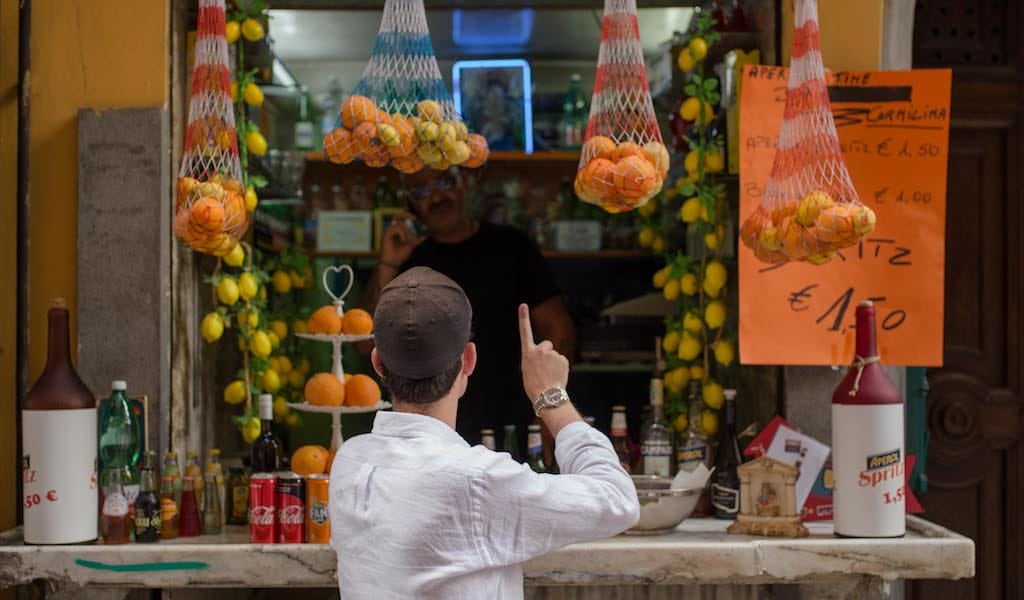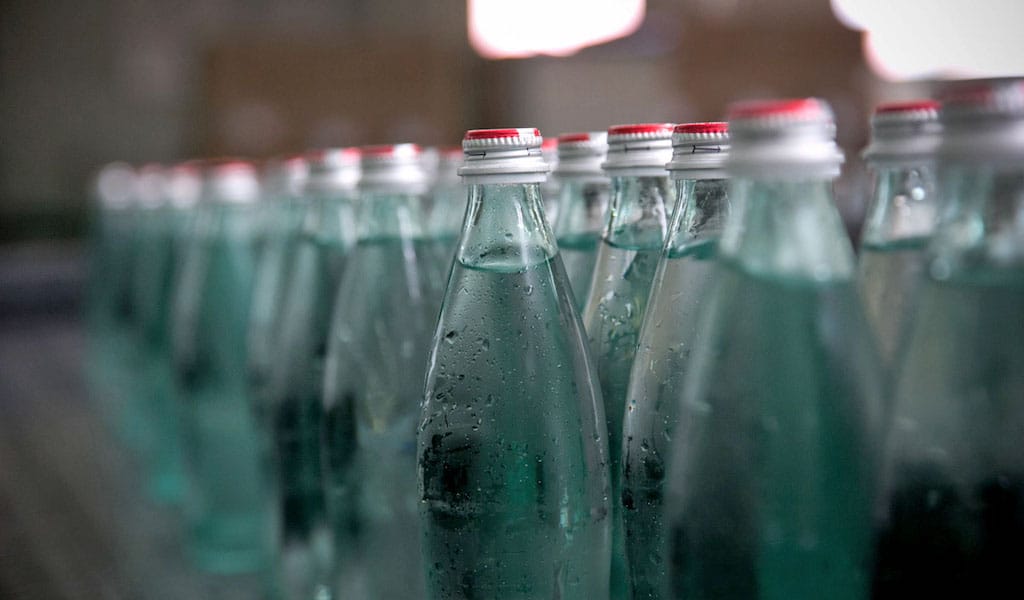We climb up, arriving at the edge of the ancient Roman thermal baths of Baiae, which date back to the 1st century BCE. It has been pouring rain, but we see no standing water here. “We take obsessive care of the soil, and the water is cleverly drained just as our predecessors used to do it,” Luigi Di Meo, 61, tells us.
Luigi is the owner of La Sibilla winery and vineyards, the grounds of which spreads out around us on this dreary day. But the grass is plush and bright here in the fertile heart of the Phlegraean Fields, a now-dormant volcanic region just outside of Naples, and all the elements – the archeological park of Baiae, our quick city getaway and the abundance of wine on the horizon – have conspired to add a dramatic, romantic flair to the melancholy weather. Today, La Sibilla feels like one of the most beautiful wineries in the world. And this is all before we even set foot inside the nearby aqueduct’s ancient cisterns, which are now home to La Sibilla’s wine cellar.
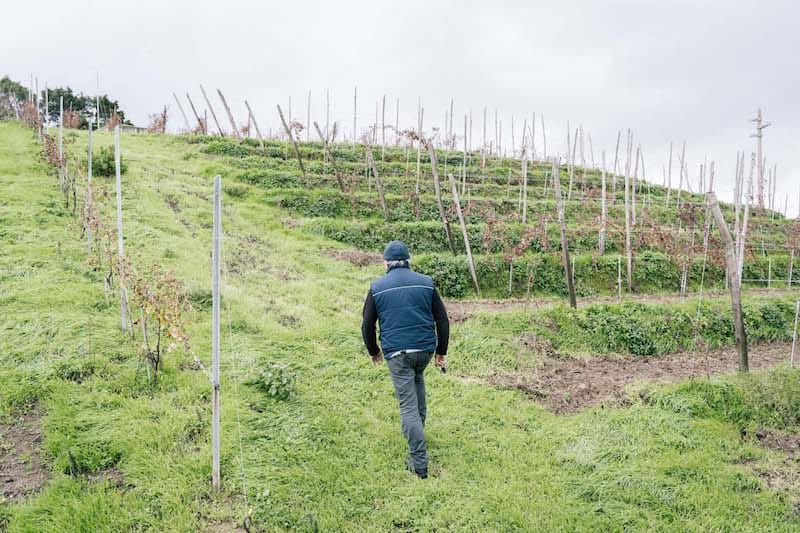
“The cisterns guarantee a constant temperature and humidity,” Luigi tells us, “and were created to control the flow of water.” The Romans were masters of hydro engineering, building aqueducts across their empire, and they were also great cultivators of wine. One can only imagine the pride they might take in hearing the story of how their cisterns are now being used as a cellar for exceptional vino.
Luigi and his wife Restituta Di Meo, both sixty-years-old, are the two protagonists of this 200-year-old tale. Their three sons, Vincenzo, Salvatore and Mattiacomplete the family dream, working together in the vineyards and winery. As is common in a city like Naples, this is a multi-generational story. Five generations of winemakers are linked by this land, passed down from father to son.
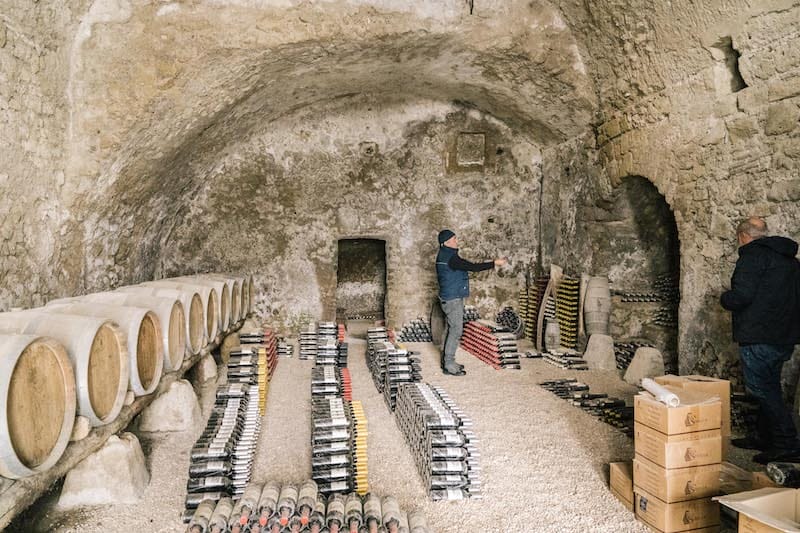
“Here, family traditions are deeply rooted,” Restituta tells us. “We were only able to freely choose the name of our third child, Mattia. Otherwise, the first child always takes the name of his paternal grandfather, and the second child the name of his maternal grandfather,” Restituta says. Though we try, there are more Vincenzos and Luigis in the Di Meo line than we can keep track of.
Five generations of winemakers are linked by this land, passed down from father to son.
One moniker that did stick with us is the nickname of all five generations of the Di Meo family: “Spigoni,” meaning “ears,” as in ears of wheat. Before they were cultivators of grapes, the Di Meos focused their efforts on that grain. By the early 1800s, our first Luigi Di Meo would use his mules to transport wine on behalf of the area noblemen. His son Pasquale succeeded him after the unification of Italy in 1860, and was able to buy land at the end of the 19th century. It was an epochal feat and transition – this small parcel of land transforming their family from workers to owners of giving earth.
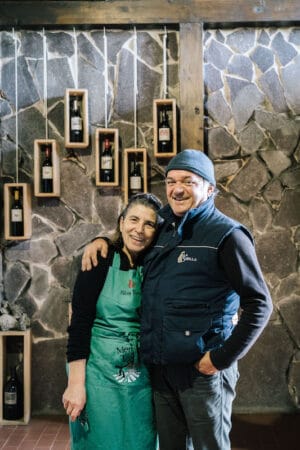 In the 1920s, our second Luigi built the houses where the family lives today – but in 1938 the state expropriated the land because it was of archaeological interest, due to the nearby remains of the Baiae thermal baths and other significant nearby Roman ruins. Years later, however, after excavations, the state granted the Di Meo family the right to install their vineyard within the archaeological site, creating a unique relationship between the ruins and wine production that has no equal in the world.
In the 1920s, our second Luigi built the houses where the family lives today – but in 1938 the state expropriated the land because it was of archaeological interest, due to the nearby remains of the Baiae thermal baths and other significant nearby Roman ruins. Years later, however, after excavations, the state granted the Di Meo family the right to install their vineyard within the archaeological site, creating a unique relationship between the ruins and wine production that has no equal in the world.
The Di Meo family became the official custodian of the archaeological area on their land, as well as the heroic cultivators of vines climbing through the opus reticulatum of the Roman walls on their border. On top of that, they house their wine in the cisterns of an old aqueduct, which carried water to the Piscina Mirabilis cistern in Bacoli where the Roman fleet was stationed.
In 1993, Luigi Di Meo created the La Sibilla brand and began to produce a bottled natural wine of exceptional quality. The winery’s name is inspired by the Cumaean Sibyl, the priestess of Apollo who cashed in on her title as oracle nearby, close to Lake Averno. The cave where she would proffer her sage snippets of wisdom is known today as the Antro della Sibilla.
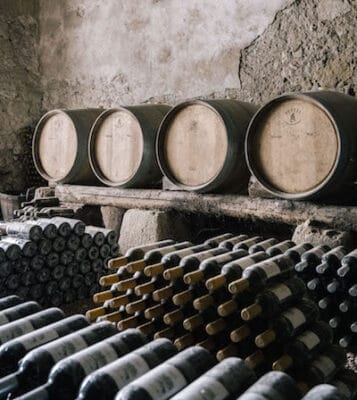
Also well-known are the grapes of the Phlegraean Fields. There are two basic ones grown in the archaeological area itself: Falanghina (white) and Piedirosso (black). Together the two make up the DOC wines of Campi Flegrei, and both are beloved by lovers of the region’s wine.
Then there are two CRUs – these are fine wines produced exclusively in a delimited area and from a specific vineyard. At La Sibilla, they come from the estate’s oldest vineyards. The first is a Falanghina called “Cruna del lago” (The Eye of the Lake), and the other is “Vigna Madre,” a pure red Piedirosso. It has an intense, ruby color with an excellent smell of fruit and a consistent flavor. It can be perfectly paired with meat dishes. The Falanghina, on the other hand, is straw yellow in color and has hints of citrus. It is an ideal companion to a fish dish. Another of our favorites is the the Passito di Falanghina, perfect for tastings with desserts.
La Sibilla produces an average of 70,000 bottles a year, of which only 10 percent remain in the province of Naples. These can be found in the most important wine shops in the center (for example, Vini e Cioccolata on via Andrea d’Isernia or Enoteca La Giarra in the Vomero Quarter).
The rest of the winery’s production is exported, mostly to the United States where it has a distributor on each coast. It ends up on tables like at San Francisco’s popular A16 restaurant. Luigi proudly tells us that the family sells their wine on Dry Farm, an American portal for natural wines.
“Managing a vineyard that is 200 years old means thinking now for future generations” says Luigi. “Ours is a heroic agriculture: low mechanization, absolutely natural wines, without any addition of chemicals. It’s all done in the family, from the earth to the bottle. To make a true, natural wine, the process starts from the earth and then continues in the cellar.”
He shows us where he is currently planting new vine shoots, which won’t bear fruit for at least another 10 years. Like the Di Meo family, between the vineyard and winery lives a pact that spans generations.
 July 25, 2023 Liquid Assets
July 25, 2023 Liquid Assets
It was August 31, 1957, and Yiannis Dritsas, a representative of Nestlé Greece, was at […] Posted in Athens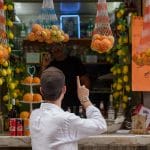 July 7, 2023 The Water Banks of Naples
July 7, 2023 The Water Banks of Naples
Naples has a lot of iconic eateries and shops, but one of the lesser-known city icons is […] Posted in Naples July 6, 2023 Liquid Assets
July 6, 2023 Liquid Assets
It was a scorcher of a summer day in 2002, and we were pushing our broken Russian […] Posted in Tbilisi
Published on February 09, 2022
Related stories
July 25, 2023
AthensIt was August 31, 1957, and Yiannis Dritsas, a representative of Nestlé Greece, was at the 22nd Thessaloniki International Fair. His mission? To present a new iced chocolate drink for kids. It was simple, really: add milk and cocoa powder to a shaker (essentially a cocktail shaker), shake well and serve. During a break, an…
July 7, 2023
NaplesNaples has a lot of iconic eateries and shops, but one of the lesser-known city icons is the kiosk of the fresh-water-seller. Scattered throughout the city, the banks of the acquafrescai – some of which are very famous – sell various mineral waters and refreshments. These kiosks were born to provide relief in the summer…
July 6, 2023
TbilisiIt was a scorcher of a summer day in 2002, and we were pushing our broken Russian motorcycle and sidecar through crowded Plekhanov streets with a gnarly case of cotton mouth. Dripping in sweat, we limped up to the kiosk by our building and slipped some coins to the lovely Irma for a lifesaving cold…







































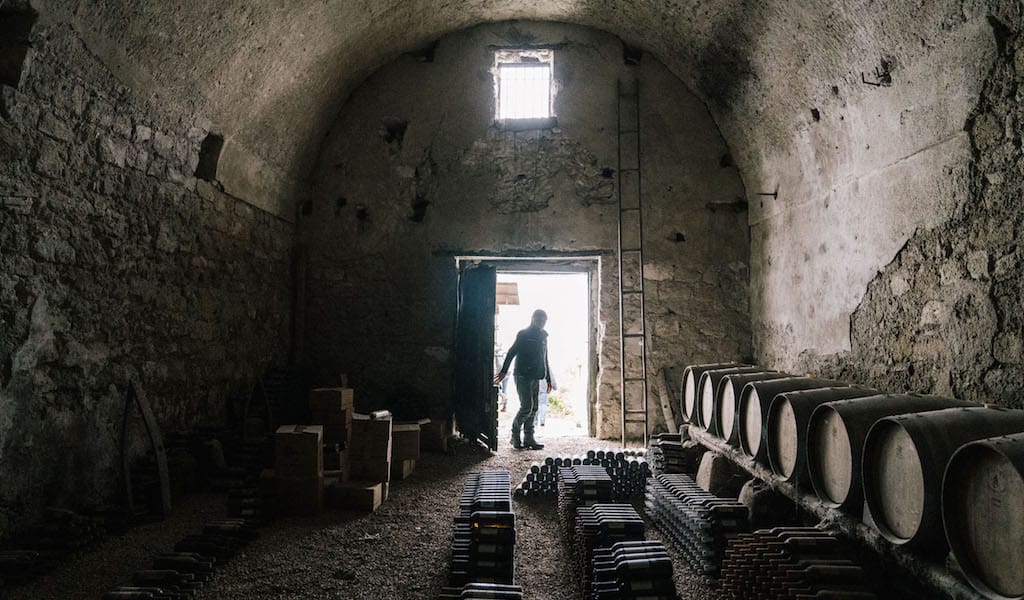


 In the 1920s, our second Luigi built the houses where the family lives today – but in 1938 the state expropriated the land because it was of archaeological interest, due to the nearby remains of the Baiae thermal baths and other significant nearby Roman ruins. Years later, however, after excavations, the state granted the Di Meo family the right to install their vineyard within the archaeological site, creating a unique relationship between the ruins and wine production that has no equal in the world.
In the 1920s, our second Luigi built the houses where the family lives today – but in 1938 the state expropriated the land because it was of archaeological interest, due to the nearby remains of the Baiae thermal baths and other significant nearby Roman ruins. Years later, however, after excavations, the state granted the Di Meo family the right to install their vineyard within the archaeological site, creating a unique relationship between the ruins and wine production that has no equal in the world.



